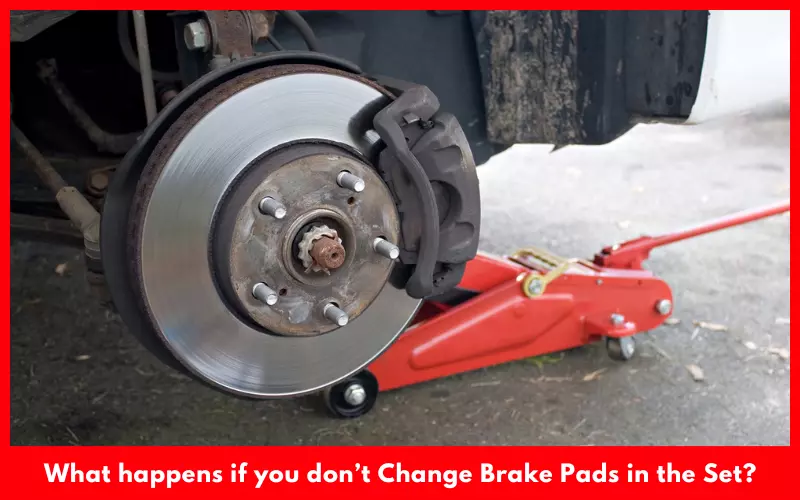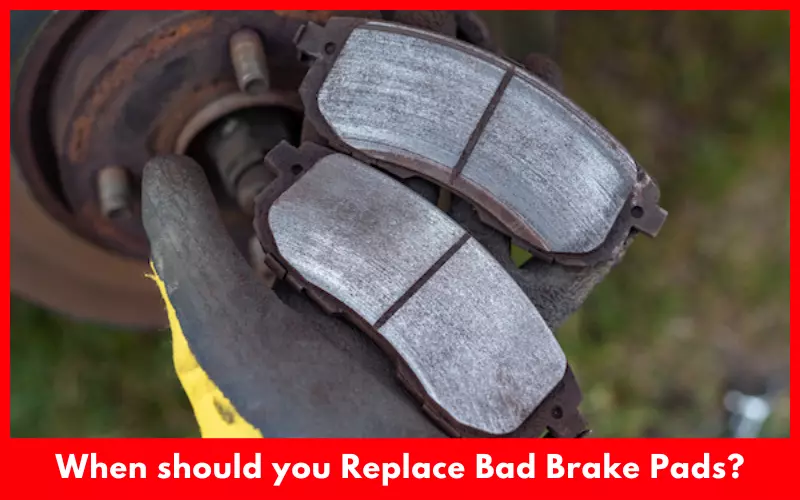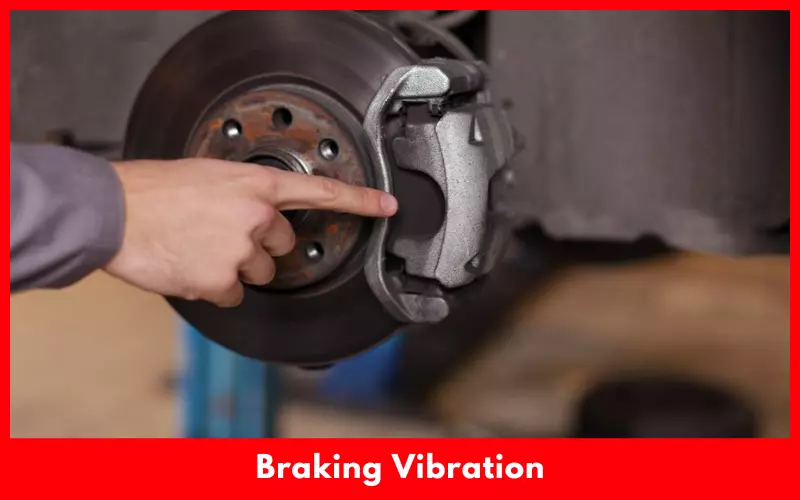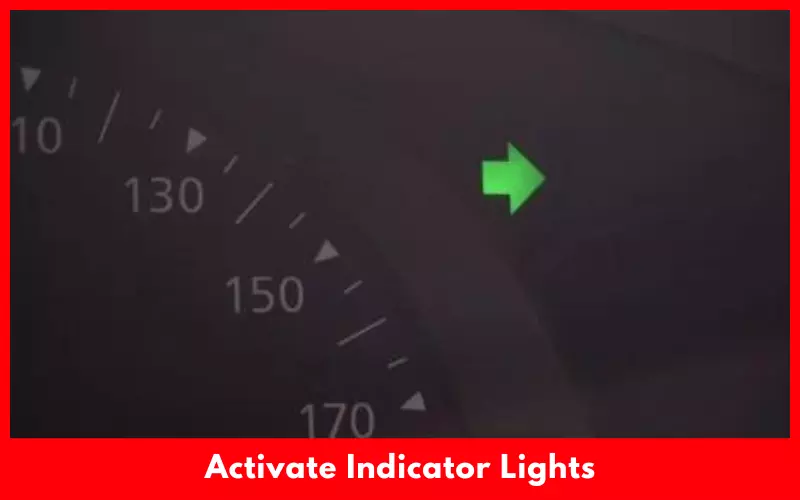Brake pads are vital components of a car that need to be replaced after a certain interval to maintain the complete functionality of the brake system. But replacing brake pads isn’t the same as changing tires, rotors, or wheels as it comes in sets instead of individually.
So if you don’t know how many brake pads come in a box, or why it comes in a set, your brake system repair project can go wrong. Basically brake pad comes in a set of 4 pieces in a box and need to change all of them together to avoid causing shaking, noise, vibration or inaccurate functioning.
Article Summary
How Many Brake Pads Per Wheel?
A car needs 2 brake pads per wheel across the same axle, one for the front axle and one for the rear axle. Each wheel uses a pair of brake pads. If you need to change the brakes, you have to change in pair. That’s why brake pad box comes in a set of 4 pieces.
When buying brake pads, you have to choose a compatible set for your car’s make and model and determine the one you need to replace, rear or front. The set includes two outboard pads and two inboard pads.
Unlike other parts of the car like rotors or calipers that are sold individually, you’ll get a box for both front pads and rear brake pads. If one side’s brake pad gets damaged or worn out heavily, you need to change both front and rear wheels together instead of changing one side only.
Why Do Brake Pads Come in Pairs?
Brake pads are sold in pairs instead of individually due to plenty of sensible reasons. For example, due to using longer time or continuously, brake pads wear out on both sides. So, you’ll see wear out on both front sides and both rear sides equally. Hence there’s a need to change the both front and rear side brake pads at a time.

Even if there is wear-out in a single pad, still you should change both pads on the same axle. Otherwise, if you change the brake pad on one side, the vehicle may pull hard to one side. It can increase the risk of accidents. So it’s better to replace both sides’ brake pads together.
In terms of rotors, these components don’t wear out at the same time. so, you will find one rotor is good while the other side’s thickness reduced. In this case, you can change the damaged rotors without touching the other sides and your car will work absolutely fine.
Calipers can also be replaced individually as these as self-aligning. So you can change the only caliper that becomes too thin.
What Happens if You Don’t Change Brake Pads in the Set?
If you don’t replace brake pads in a set, you’ll experience catastrophic consequences during driving. Brake pads are intended to work in pairs. If you replace only a single pad, it’ll put an unbalanced amount of stress on the brakes and cause a rough braking experience.

So the car’s one side will brake harder than the opposite side and you’ll find it harder to control the car. Using dissimilar brake pads can cause rough wear on the rotor and causes vibration during applying the brakes and steering wheel pulsating.
If you don’t replace brake pads in a set, it can overheat the pads and cause premature failure. In extreme cases, the brake caliper can seize up. And the accelerated pad can wear out.
Should You Change Rotors every time you Change Brake Pads?
No, it isn’t always necessary. It depends on the condition of the rotors. So you have to measure the rotors to ensure the rotors are serviceable. So check if the rotors have more than the minimum wear thickness, these aren’t warped over the serviceable limits and don’t have any heat cracking.
So if you notice the rotors are in functioning condition while changing the brake pads, technically machine the rotors to smoothen them and reuse them. But if the rotor has less metal than required, it’ll overheat the brake and cause rotor warp issues.
If you keep driving with thinner rotors, the rotor will start heating up and cause heat cracks or warp, particularly during driving in start-stop traffic or mountains. It can also cause failure in the line and end up with expensive repairs.
Machining the rotors can take around a few hours per rotor or repair shops can charge $130 per hour. So, it’s better to change the pads and rotors at a time particularly when you disassemble the vehicle.
When Should you Replace Bad Brake Pads?
Brake pads have limited density and need to be replaced quicker than rotors. Brake pads need to be replaced every 30,000 to 35,000 miles while you can replace them 50,000 to 70,000 miles.

However, you can track these symptoms to determine the right time to change the rotors and brake pad.
1. Squealing or Squeaking Noise
If you hear squeaking sounds while applying brakes, it’s an indication of worn pads. If you ignore the sound, it’ll worsen the sounds and turn into grinding noise. It’ll also start damaging the rotors.
2. Braking Vibration
If your car shakes violently after stepping down the brake pedals, it’s a sign of a damaged pad. It also indicates that the pad’s surface wears out smoothly and causes an imbalance brake issue. if so, replace the brake pads immediately.

3. Delay to Stop
The worn-down brake pad may also cause you to struggle to stop the vehicle after engaging the pedals. However, you can experience the same consequences due to leakage in the fluid tank or low brake fluid. If it isn’t safe to keep driving in this condition. Instead, inspect the car immediately by an expert mechanic.
4. Activate Indicator Lights
Most modern cars should activate brake warning lights or ABS lights if the brake doesn’t work properly due to a damaged brake pad.

5. Thin Pads
If you experience the brake pads working unusual, simply inspect them and measure the thickness. If the thickness is under the ¼ inch or 6.4mm, replace the brake pad.
FAQs on How Many Brake Pads Come in A Box
Should I Replace All 4 Brake Pads?
Yes, you should replace both front pads and rear brake pads at the same time. this way you can ensure proper braking power. Even it can save you time and effort with a single visit instead of a couple of. So you should replace all four brake pads together to get the same quality of performance from all four.
How Much Does it Cost to Replace 4 Brake Pads?
The average cost of replacing either the front brake pad or a rare brake pad is around $115 to $300 as most mechanics charge about $130 per hour. So it may cost around $230 to $600 to replace four brake pads.
How Long Do Brakes Last?
Most brake pads last around 25,000 to 65,000 miles while many owner claim that their brake pads lasted over 80,000 miles. So, it’s difficult to measure the exact longevity of the pads, on average brake pads last 40,000 miles.
Final Words
Hope you understand how many brake pads come in a box and why a single brake pad isn’t available. Though you can change the individual brake pad on your vehicle as it is up to you, it isn’t a safe decision.
Even if you consider the maintenance cost, replace all the pads and rotors to avoid costly repairs and drive the vehicle safely and confidently. After all, this strategy will provide you fully functioning braking system.

